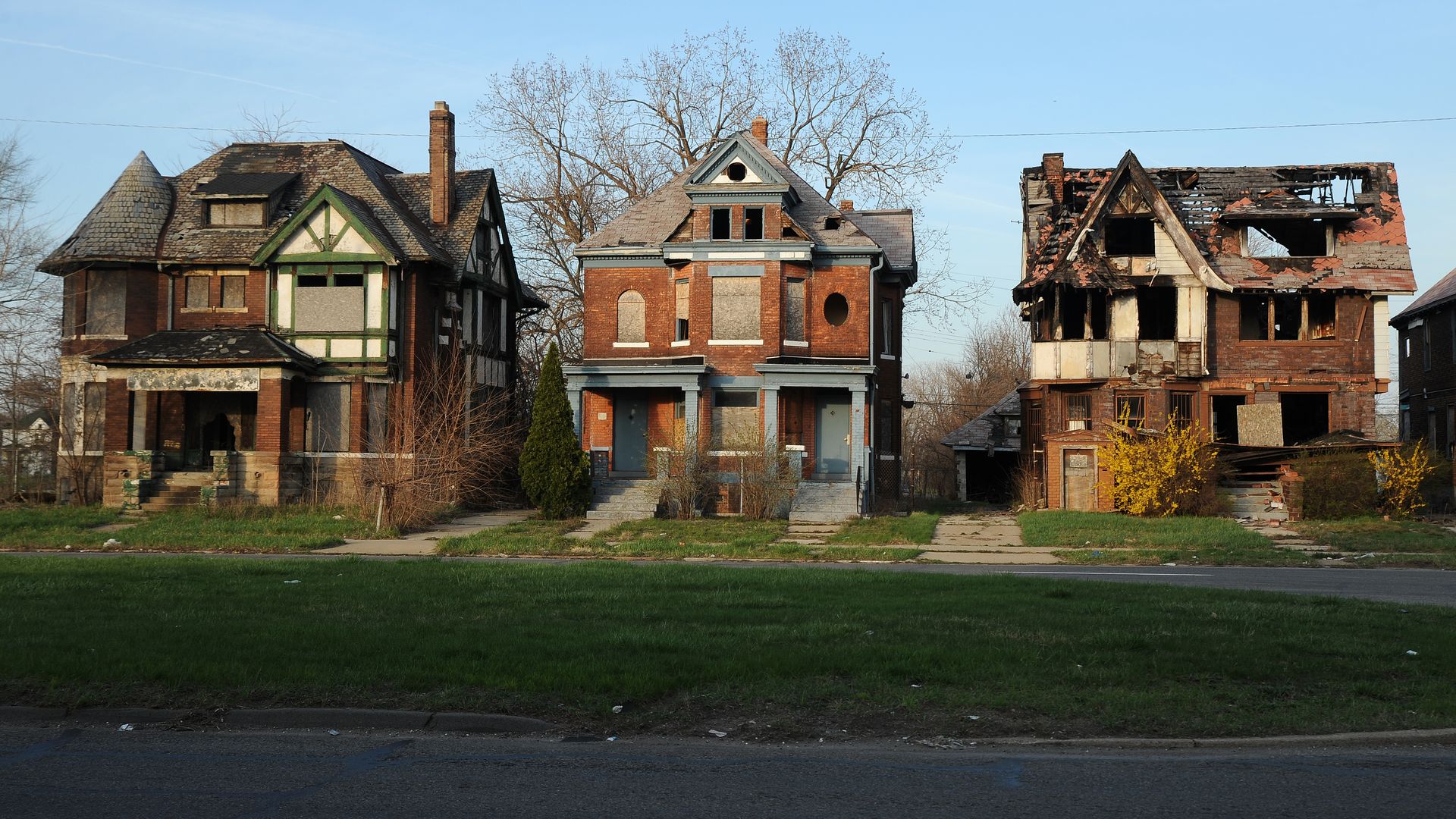
The outcry over affordable housing shortages in America's fastest-growing cities masks an equally devastating problem: persistently high rates of vacant and blighted housing in cities of all sizes.
Why it matters: Vacant housing spiked across the country after the foreclosure crisis of the late 2000s. While things have improved, vacancy rates are still far higher than they were before 2005, according to a 2018 report from the Lincoln Institute of Land Policy.
- In many post-industrial cities, vacancies are still at "epidemic levels," per the report.
- It's not just an urban problem; rural areas and small towns can have a vacancy rate nearly twice as high as major metro areas.
- Abandoned properties are a significant drain on municipalities because they are expensive to police, drag down the value of surrounding properties, and reduce tax revenues.
Driving the news: Nearly 2 dozen city leaders, as part of the National League of Cities Housing Task Force, released a report this week concluding that blighted properties are one of the biggest challenges for housing in American cities — but one not often addressed by typical efforts to boost economic growth.
What's happening
Hard-hit legacy cities are dealing with some degree of "hypervacancy." When vacancies rise above about 20% of a community's total properties, the number of vacant buildings may grow indefinitely and the market stops functioning, according to Alan Mallach of the Center for Community Progress and author of the 2018 report.
- Local governments have found creative strategies for incentivizing developers to come in or to turn lots into community parks or gardens.
- "These cities are realizing that you can't simply assume that the private market is going to come along and slurp up these properties and turn them into good, productive uses," Mallach told Axios.
What cities are doing
Gary, Indiana, has the highest vacancy rate of single-family housing in the country. Working with local universities and nonprofits, the city launched the Gary Counts initiative to take inventory, eventually identifying more than 25,000 empty lots and nearly 7,000 vacant buildings.
- It costs around $10,000 to demolish a property, said Mayor Karen Freeman-Wilson. But tearing the structure down is just the start, as vacant lots have a way of destabilizing neighborhoods. "There's often still a cloud hanging over the land," she said.
- Leveling many adjacent properties attracts developers to build new subdivisions.
- For example, one parcel has been transformed into a townhouse community with a variety of price points targeting millennials who want to live close to the commuter rail to Chicago.
In Macon, Georgia, the Mill Hill neighborhood flatlined when the mill closed and more than half of the homes sat empty.
- Georgia's redevelopment plan allowed the city to declare Mill Hill a "slum," making it eligible for rehabilitation.
- The local urban development authority and arts alliance are revitalizing the neighborhood as an arts district and have turned vacant lots into a linear park spanning four blocks.
Baltimore stimulated its own market by providing a steady pipeline of neglected properties to developers through regular auctions.
- Since 2010, the "Vacants to Value" program has put 4,200 vacant buildings back into use.
Philadelphia, tired of abandoned lots that attract trash and crime, entered a "LandCare" program with the Pennsylvania Horticultural Society to "green" vacant lots.
- It costs about $1,500 per lot to put down sod, plant a few trees and put up a simple fence, and it "totally changes the whole feeling of a neighborhood," Mallach said.
The cost
Dealing with abandoned properties is expensive. For example, Detroit is spending $256 million in federal grants to tear down vacant buildings, and Mayor Mike Duggan is pushing a $200 million bond issue to help eliminate blight by 2024, per the Detroit News.
The bottom line: In thriving cities, abandoned structures are quickly snapped up by investors looking to turn old warehouses into hip lofts.
- But developers aren't knocking down the doors in distressed Rust Belt cities and small towns — the very places that can least afford to fix the problem.







